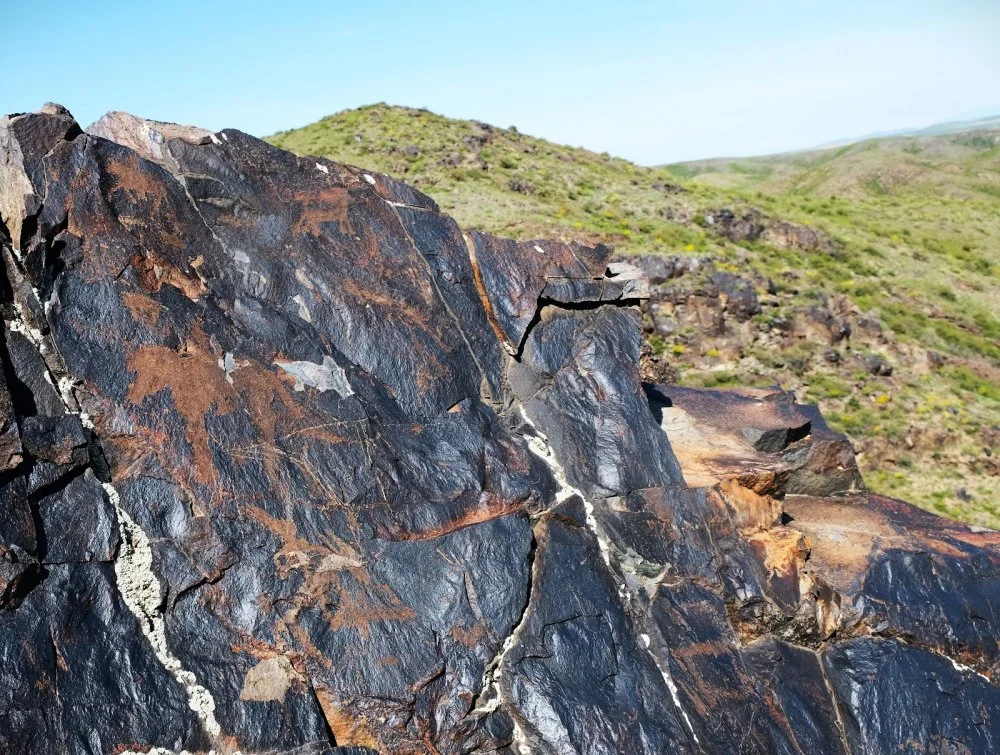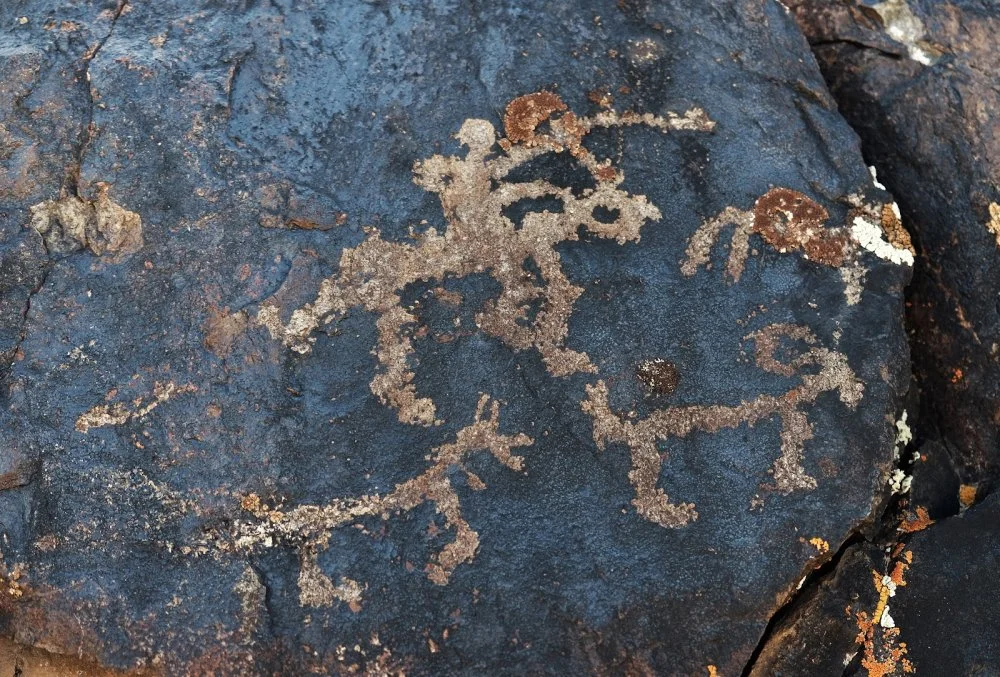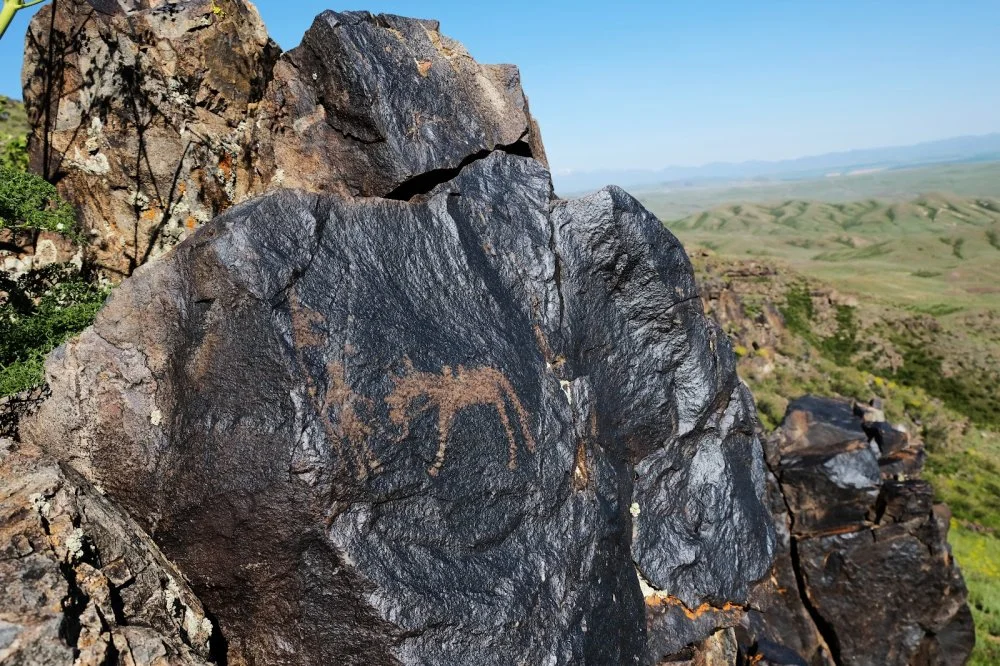Once upon a time, being able to read petroglyphs was enough to be able to navigate through an unfamiliar area and keep up with the latest and important news in the community. Unfortunately, we’re still trying to crack the code for many of these messages of our ancestors. But every now and then, we get lucky and learn something amazing!
A well-trodden path leads through a valley and a narrow gorge to one of the passes in the southwestern part of the Arqarly Mountains (Jetisu). The question of who walked or rode along it and why has long been on the minds of historians, and one possible theory emerged during an archeological survey conducted by the volunteers of the Petroglyph Hunters team in May 2019.

Petroglyphs on the pass/Olga Gumirova
If you follow the trail from the pass in a southeastern direction down the gorge, you will come to a Turkic settlement in a few kilometers. Only the ruins of the stone foundations, overgrown with grass, now remain. The settlement is sheltered from the piercing northwesterly winds by a hillside, situated on the banks of a once-flowing but now dry stream. Apparently, the inhabitants drove cattle through the pass, and hunters and caravans passed through as well as is evidenced by the drawings in a small cluster of petroglyphs near the trail. But the trail was much more than that.

Petroglyphs on the pass/Olga Gumirova
On a prominent, patina-covered rock just above the trail, these Turkic nomads carved a rare drawing. It shows a rider having dismounted and leading his saddled horse carrying a banner. The cultural critic and writer Zira Naurzbayeva, who participated in this expedition, suggested that the petroglyph depicted a messenger announcing the death of an important member of the family, perhaps a warrior—it is clearly not for nothing that he is holding a banner.

The Messenger of Doom/Olga Gumirova
In fact, if you go farther up the trail, you will find a Turkic burial mound, which is located on a plateau offering a stunning view of the Arqarly Mountains, the Ili River valley, and the snowy peaks of the Trans-Ili Alatau. The mounds have, however, been damaged by heavy machinery used for either agricultural work or military exercises, and the burial ground has unfortunately lost its original integrity.

The Messenger of Doom/Olga Gumirova
In 2021, an archeological expedition from the Alkey Margulan Institute of Archeology made a remarkable discovery while documenting the monuments of the Arqarly Mountains. They found another picture of a horseman leading a horse carved on a stone in the middle of a Turkic mound.
Thus, we know what petroglyph was used in ancient times to point the way to burials. Why, though, was the dismounted rider used as a symbol? You see, even today, when the news of a death is brought to the yurts, custom dictates that the rider should dismount at a distance and approach them, leading his horse by the reins.




